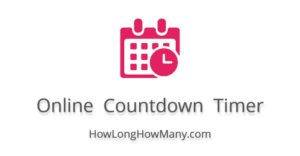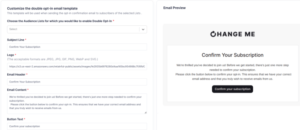
Smart timing sequence schedules play a crucial role in optimizing various business processes, enabling companies to reach their target audiences at the most opportune moments.
These schedules are not only relevant in marketing but also impact sectors like e-commerce, content creation, and digital advertising, helping organizations maximize engagement and efficiency.
Understanding Smart Timing Sequence Schedules
Smart timing sequence schedules are strategic frameworks that dictate the timing of activities in various sectors, from manufacturing to marketing. Their significance lies in optimizing workflow efficiency, enhancing productivity, and ensuring timely delivery of products and services. By incorporating these schedules, businesses can gain a competitive edge, enabling them to respond swiftly to market demands.Implementing smart timing sequence schedules offers numerous benefits for organizations.
They lead to better resource allocation, improved communication, and increased employee satisfaction as tasks are clearly defined and timed. However, businesses often face challenges such as resistance to change, the need for training, and potential disruptions during the transition to new scheduling systems.
Smart Timing in Internet Marketing
Smart timing sequence schedules play a pivotal role in enhancing online marketing campaigns. By strategically timing content releases, businesses can maximize their audience engagement and conversion rates. This can be particularly effective in aligning marketing efforts with consumer behavior and peak activity periods.Examples of effective timing strategies include posting on social media during peak usage hours, launching email campaigns at times when recipients are most likely to open them, and scheduling promotional posts around significant events or holidays.
To aid in scheduling content across various digital platforms, several tools can be utilized:
- Hootsuite: For social media scheduling and engagement tracking.
- Buffer: Efficiently schedule posts across multiple accounts.
- Mailchimp: For optimizing email campaign timings.
- CoSchedule: To create an integrated marketing calendar.
Affiliate Revenue Optimization
Using smart timing sequence schedules can significantly optimize affiliate marketing strategies. Timing plays a critical role in promotions and seasonal campaigns, allowing affiliates to capitalize on trends and consumer purchasing patterns. By aligning offers with peak shopping times or special events, affiliates can drive more traffic and increase sales.A table showcasing successful timed affiliate promotions might include:
| Promotion | Timing | Results |
|---|---|---|
| Holiday Discounts | 1 week before Black Friday | 150% increase in sales |
| Seasonal Offers | During summer holidays | 200% engagement boost |
| Launch of New Product | 1 month before Christmas | 300 new sign-ups |
Online Auctions and Timing Strategy
In online auctions, timing is crucial for maximizing bids and attracting more bidders. Sellers need to carefully schedule their auction listings to coincide with peak user activity times. This increases visibility and competition among bidders, driving prices higher.Techniques for effectively scheduling auction listings include:
- Launching auctions on weekends or evenings when potential buyers are more active.
- Ending auctions at strategic times to capture last-minute bids.
- Utilizing countdown timers to create urgency among bidders.
A comparative analysis of auction timings across different platforms reveals varying user behavior and bidding patterns. For example, eBay auctions may perform better if scheduled to end on Sunday evenings, while platforms like Amazon might benefit from weekday evenings.
Enhancing Audio Streaming with Smart Timing
Smart timing sequence schedules can significantly benefit audio streaming services by optimizing listener engagement. Scheduling audio content during peak listening times ensures higher audience retention and interaction.To schedule audio content for maximum impact, consider the following strategies:
- Analyzing listener habits to determine the best times for releases.
- Incorporating seasonally relevant content aligned with current trends.
- Using data analytics tools to track listener behavior and adapt scheduling accordingly.
Best practices for timing audio releases include:
- Releasing new episodes consistently on the same day and time to build audience anticipation.
- Coordinating releases with promotional events or relevant cultural moments.
- Testing different release times to find optimal listener engagement patterns.
Autoresponders and Timing Automation
Autoresponders can leverage smart timing to enhance the effectiveness of email campaigns. By scheduling emails based on recipient behavior, businesses can significantly improve open and click-through rates.Different timing strategies for follow-up emails in autoresponder sequences include:
- Sending initial welcome emails immediately after sign-up.
- Timing follow-ups to coincide with specific user actions, like cart abandonment.
- Segmenting audiences to tailor timing based on demographics and interests.
Automation tools that support smart timing features in autoresponders include:
- ActiveCampaign: For advanced automation and scheduling capabilities.
- Drip: Focused on e-commerce and tailored email sequences.
- ConvertKit: Ideal for creators and bloggers with timed drip campaigns.
Effective Banner Advertising Scheduling
The timing of banner advertisements greatly influences their performance. Scheduling ads at optimal times can enhance visibility and improve click-through rates, leading to better ROI.Methods for creating an effective ad schedule include:
- Identifying peak traffic periods on target websites to schedule ads accordingly.
- Using A/B testing to determine the most effective ad timings.
- Monitoring analytics to adjust ad schedules based on performance data.
A table of metrics to analyze the effectiveness of timed banner ads might include:
| Ad Timing | Impressions | Click-Through Rate |
|---|---|---|
| Weekdays 6 PM – 9 PM | 50,000 | 5.5% |
| Weekends 10 AM – 12 PM | 70,000 | 6.2% |
| Weekdays 12 PM – 2 PM | 30,000 | 4.0% |
Blogging and Content Scheduling
Smart timing plays a crucial role in maximizing blog traffic and audience engagement. By releasing blog posts at strategic times, publishers can optimize their reach and interaction with readers.To create a content calendar that incorporates smart timing principles, consider the following:
- Researching peak traffic times for your target audience based on analytics.
- Scheduling posts in advance to ensure consistent content delivery.
- Aligning post topics with current trends and seasonal interests.
Successful examples of blog posts published at optimal times include:
- Year-end financial tips released in early December to capture holiday planner interest.
- Summer travel guides published in late spring to inspire early vacation planning.
- Health tips during January to coincide with New Year resolutions.
Domain Names and Timing Considerations
Timing can significantly affect domain registration and bidding strategies. Choosing the right moment to release new domain names can enhance visibility and demand.Tips for timing the release of domain names include:
- Monitoring industry trends to anticipate when demand for certain names may spike.
- Capitalizing on major events or announcements relevant to the domain.
- Utilizing limited-time offers to create urgency during the registration period.
Key considerations for domain name timing decisions include:
- Understanding market cycles and trends in the target niche.
- Assessing competitive registrations and timing based on market saturation.
- Planning launches around significant business milestones or events.
E-Books and Timed Releases
Timing is crucial for the success of e-book launches in the market. A well-timed release can significantly boost visibility and sales, particularly if aligned with promotional activities.Strategies for scheduling promotions around e-book releases include:
- Building anticipation through pre-launch marketing campaigns.
- Utilizing countdown promotions to create urgency prior to the release date.
- Coordinating with influencers or bloggers for simultaneous promotion.
Successful e-book launch timings from notable authors can include:
- Releasing during major literary events or festivals.
- Timing releases to coincide with holiday shopping seasons.
- Leveraging social media insights to find peak engagement times.
Ezine Publishing with Smart Timing
Timing significantly influences readership and engagement in ezine publishing. By aligning release schedules with reader habits, publishers can enhance their reach and effectiveness.Techniques for scheduling ezine releases to fit reader availability include:
- Sending issues during weekdays when subscribers are more likely to engage.
- Utilizing feedback and analytics to determine optimal sending times.
- Creating themed issues that align with upcoming events or seasonal topics.
A table comparing open rates based on different timing strategies might include:
| Timing Strategy | Open Rate |
|---|---|
| Tuesday Morning | 40% |
| Thursday Afternoon | 35% |
| Saturday Evening | 25% |
Link Popularity and Timing
The relationship between timing and link building is vital for effective strategies. Properly timed link placements can enhance their visibility and effectiveness.Strategies for scheduling link placements for maximum impact include:
- Identifying peak traffic periods to release new linkable content.
- Using seasonal trends to align link strategies with audience interests.
- Coordinating with online events or news to boost link visibility.
Methods for measuring the effectiveness of timed link campaigns include:
- Tracking referral traffic from placed links over time.
- Analyzing search engine ranking changes following link placements.
- Monitoring social engagement around linked content.
List Building and Timing Strategies

Timing can greatly influence the effectiveness of list-building efforts in digital marketing. Well-planned timing can enhance the success of lead magnets and sign-up incentives.Best practices for scheduling lead magnets include:
- Launching sign-up incentives during high traffic periods.
- Timing promotions to coincide with major events relevant to your audience.
- Utilizing analytics to adjust timing based on subscriber behavior.
Tools that help automate timing for list-building activities include:
- Leadpages: For creating landing pages with timed offers.
- OptinMonster: For pop-ups and timed promotions to capture leads.
- HubSpot: For comprehensive marketing automation solutions.
Podcasting and Scheduling Content
Scheduling is vital for podcast releases to maintain audience retention. A well-timed release schedule can keep listeners engaged and coming back for more.Methods for creating a podcast release schedule that aligns with listener habits include:
- Analyzing download data to identify peak listening times.
- Coordinating episodes around relevant news or events to leverage current interests.
- Consistently releasing episodes on the same day and time for predictability.
Successful podcast timing examples from top shows illustrate the importance of strategic scheduling. For example:
- Weekly shows that release new episodes every Thursday to keep audiences engaged.
- Limited series that launch all episodes at once to encourage binge listening.
- Seasonal podcasts that align with particular holidays or events for increased relevance.
PPC Advertising and Timing Dynamics
Timing can significantly influence the effectiveness of pay-per-click (PPC) campaigns. By strategically scheduling ads, businesses can align their efforts with times of high traffic and consumer activity.Strategies for scheduling ads to coincide with high traffic periods include:
- Utilizing analytics to determine peak conversion times for specific s.
- Adjusting bids to increase visibility during known high-traffic periods.
- Testing different ad schedules to find the most effective timing.
A comparison table of PPC performance metrics based on timing may include:
| Ad Timing | Clicks | Conversions |
|---|---|---|
| Weekday Mornings | 1,000 | 150 |
| Weekend Afternoons | 500 | 50 |
| Evenings During Holidays | 2,000 | 300 |
PPC Publishing and Smart Timing
The role of smart timing in optimizing PPC publishing strategies cannot be overstated. Timed publication of ads can maximize visibility and effectiveness, leading to better overall results.Scheduling ad publications for maximum visibility includes:
- Using demographic data to target ads during specific times for particular groups.
- Implementing retargeting ads at strategic moments based on user behavior.
- Adjusting campaigns based on real-time performance metrics.
Successful PPC campaigns that benefited from strategic timing often involve:
- Using seasonal discounts during peak shopping times.
- Launching campaigns around major events relevant to the audience.
- Implementing time-sensitive offers to create urgency and boost engagement.
Last Point
In summary, understanding and implementing smart timing sequence schedules can significantly enhance business operations across multiple industries. By aligning activities with optimal timing, organizations can improve engagement, drive sales, and ensure lasting success in their marketing efforts.
Commonly Asked Questions
What are smart timing sequence schedules?
They are structured timelines that businesses use to optimize the scheduling of activities for maximum impact and engagement.
How can I implement smart timing sequence schedules in my business?
Start by analyzing your audience’s behavior and peak engagement times, then create a schedule that aligns your activities accordingly.
What tools can help with smart timing?
Various digital tools such as social media schedulers, email marketing platforms, and content management systems can facilitate effective timing.
What challenges might arise when adopting smart timing?
Challenges include aligning timing with varying audience behaviors, managing resources effectively, and ensuring consistency across platforms.
How does smart timing affect marketing outcomes?
Proper timing can enhance visibility, increase engagement rates, and ultimately lead to higher conversions in marketing campaigns.





